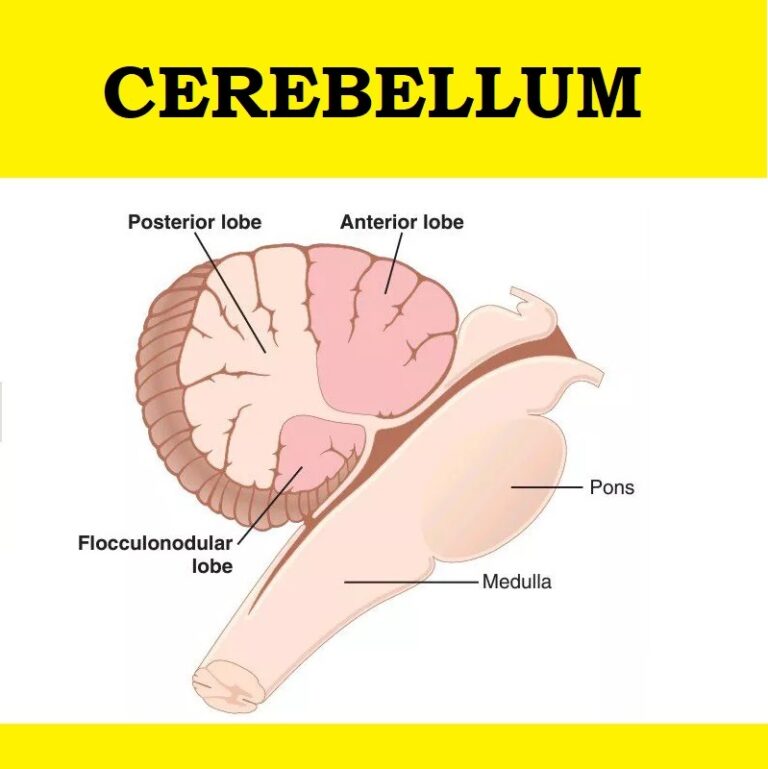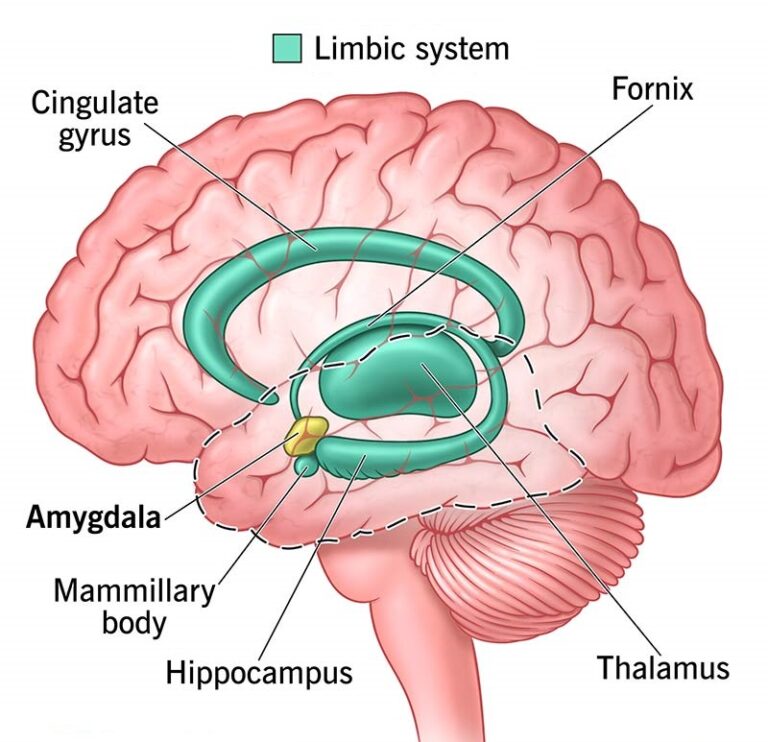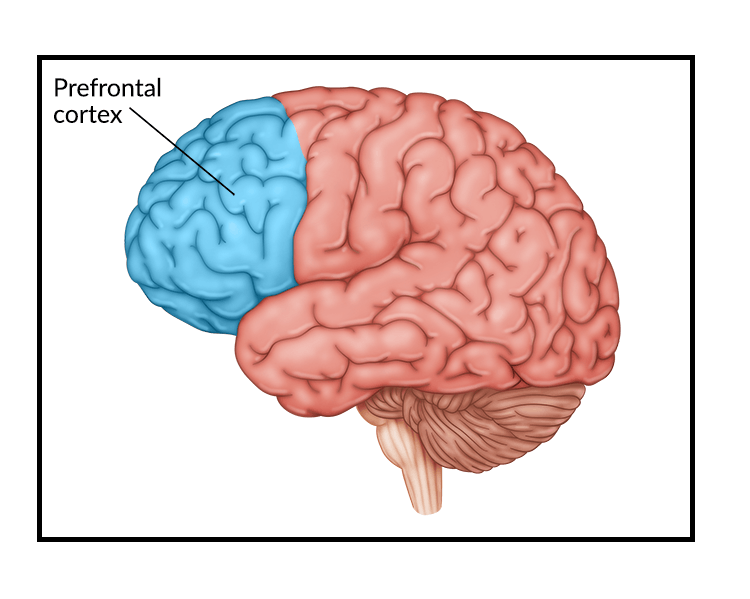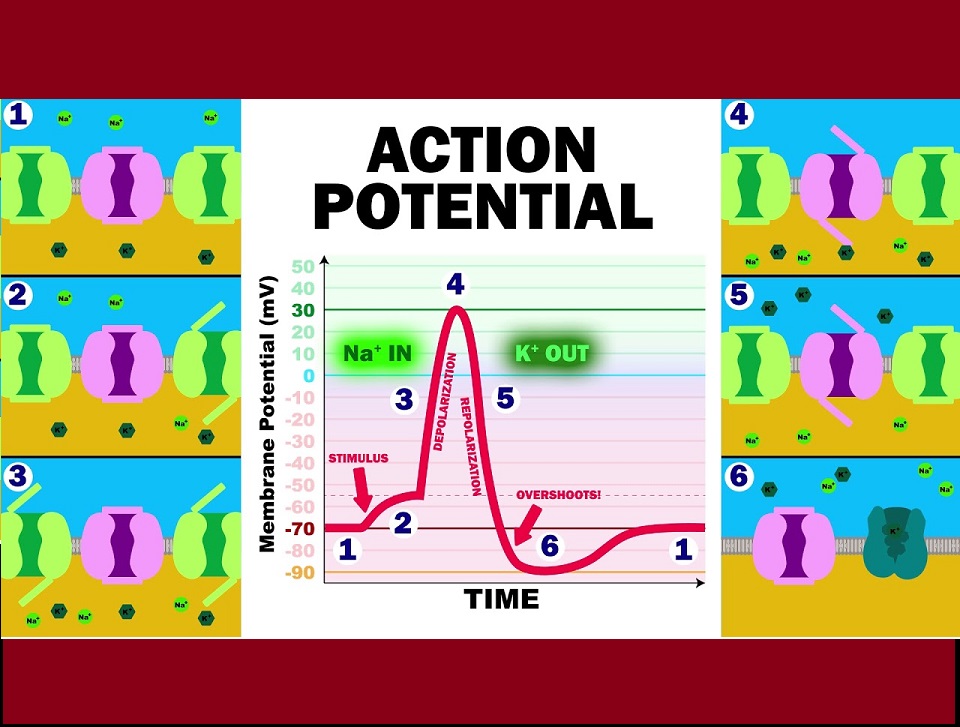
The neural impulse, also known as an action potential, is the fundamental mechanism by which neurons transmit information throughout the nervous system. Neural impulses are electrical signals that travel along the axon of a neuron, enabling communication between different regions of the body and the brain.
1. Definition and Importance of Neural Impulse
A neural impulse is an electrochemical signal that propagates along a neuron’s axon to transmit information to other neurons, muscles, or glands. Neural impulses are vital for sensory perception, motor coordination, cognitive functioning, and physiological regulation.
| Key Characteristics | Details |
|---|---|
| Type of Signal | Electrical (within the neuron) and chemical (across synapses). |
| Speed | Ranges from 0.5 to 120 m/s, depending on the axon’s diameter and myelination. |
| Direction | One-way transmission from the soma to the axon terminal. |
2. Phases of Neural Impulse Transmission
The transmission of a neural impulse occurs in a series of phases.
| Phase | Description | Voltage Range | Example in Nervous System |
|---|---|---|---|
| Resting Potential | The neuron is inactive, maintaining a negative charge inside the cell relative to the outside. | ~-70 mV | A motor neuron at rest before activation. |
| Depolarization | Sodium ions rush into the cell, reversing the polarity of the membrane and making it more positive. | ~-70 mV to +40 mV | Sensory neurons depolarizing in response to pain. |
| Repolarization | Potassium ions leave the cell, restoring the membrane’s negative charge. | +40 mV to -70 mV | Neurons resetting after sending a pain signal. |
| Hyperpolarization | The neuron becomes slightly more negative than its resting potential due to excess potassium efflux. | Below -70 mV | Preventing immediate reactivation of the neuron. |
| Refractory Period | The neuron temporarily cannot fire another action potential. | – | Ensures signal moves in one direction. |
Visual Representation of an Action Potential:
Graph of Membrane Potential Over Time:
- X-Axis: Time (ms)
- Y-Axis: Membrane Potential (mV)
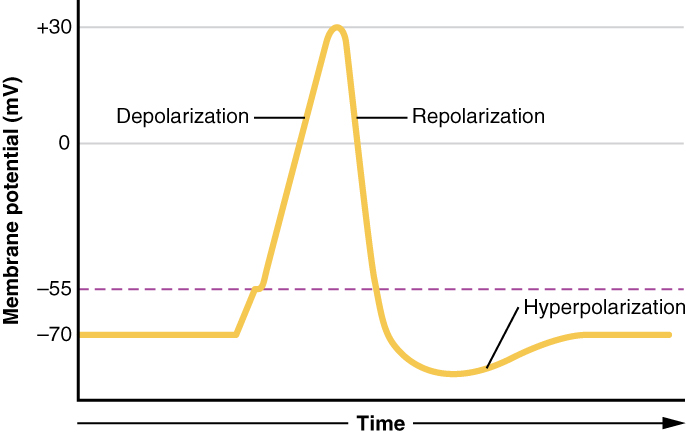
| Phase | Graph Characteristics |
|---|---|
| Resting Potential | Flat line at -70 mV. |
| Depolarization | Sharp upward spike to +40 mV. |
| Repolarization | Sharp downward spike back toward -70 mV. |
| Hyperpolarization | Small dip below -70 mV before stabilizing. |
3. Mechanisms Underlying Neural Impulse Transmission
3.1 Ion Channels and Membrane Potential
Neural impulses depend on ion channels embedded in the neuron’s membrane.
| Ion Channel | Function | Example |
|---|---|---|
| Voltage-Gated Sodium Channels | Open during depolarization, allowing sodium ions to enter the neuron. | Active during the initiation of an action potential. |
| Voltage-Gated Potassium Channels | Open during repolarization, allowing potassium ions to exit the neuron. | Restore the negative charge inside the neuron. |
| Sodium-Potassium Pump | Restores ionic balance by pumping sodium out and potassium in. | Essential for maintaining resting potential. |
Research Insight:
Studies have shown that mutations in sodium channels are linked to neurological disorders such as epilepsy (Catterall et al., 2010).
3.2 Myelin Sheath and Saltatory Conduction
The myelin sheath is a fatty layer that insulates axons and accelerates signal transmission through saltatory conduction, where impulses “jump” between Nodes of Ranvier.
| Feature | Myelinated Axons | Unmyelinated Axons |
|---|---|---|
| Speed | Faster (~120 m/s). | Slower (~2 m/s). |
| Signal Transmission | Saltatory conduction (jumping between nodes). | Continuous conduction. |
Scenario-Based Example:
- Myelinated Axon: Reflex actions like pulling a hand away from a flame.
- Unmyelinated Axon: Slow pain signals felt after the initial reflex.
Research Insight:
Demyelination, as seen in multiple sclerosis, results in slowed or blocked neural impulses, leading to motor and sensory impairments (Compston & Coles, 2002).
4. Synaptic Transmission
Once an action potential reaches the axon terminal, it triggers the release of neurotransmitters into the synaptic cleft.
| Step | Description | Example |
|---|---|---|
| Neurotransmitter Release | Synaptic vesicles release chemicals into the synaptic cleft. | Dopamine release in reward pathways. |
| Receptor Binding | Neurotransmitters bind to postsynaptic receptors. | Serotonin binding in mood regulation. |
| Signal Propagation | Postsynaptic neuron generates a new action potential. | Pain signal transmission from one neuron to another. |
5. Disorders Related to Neural Impulses
| Disorder | Cause | Impact on Neural Impulse | Symptoms |
|---|---|---|---|
| Epilepsy | Abnormal electrical activity in neurons. | Excessive and uncontrolled neural firing. | Seizures, loss of consciousness. |
| Multiple Sclerosis | Myelin sheath degeneration. | Slower or blocked signal transmission. | Muscle weakness, coordination problems. |
| ALS (Lou Gehrig’s Disease) | Degeneration of motor neurons. | Reduced ability to transmit motor signals. | Paralysis, difficulty speaking. |
Research Insight:
Advances in stem cell therapy are showing promise in repairing damaged neurons and restoring impulse transmission (Kim et al., 2020).
6. Practical Examples of Neural Impulse in Action
Example 1: Reflex Arc
- Scenario: A child accidentally touches a hot stove.
- Sensory neurons generate an action potential in response to the heat.
- The signal travels to the spinal cord, where interneurons process it.
- Motor neurons send an impulse to the hand muscles, triggering withdrawal.
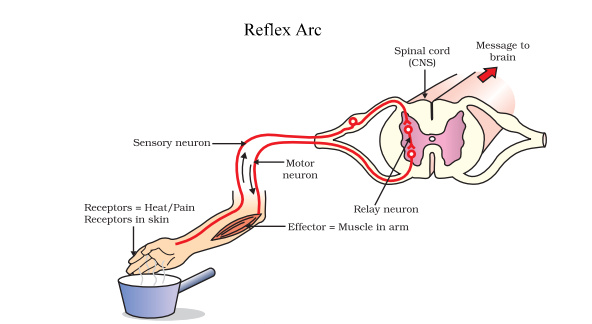
Example 2: Voluntary Movement
- Scenario: A basketball player prepares to shoot.
- Action potentials in motor neurons direct muscles to contract.
- Feedback from sensory neurons ensures precise coordination.
7. Conclusion
Neural impulses are the backbone of neural communication, enabling the nervous system to perform its diverse functions. From basic reflexes to complex cognitive processes, understanding the intricacies of neural impulse transmission provides insights into health, behavior, and disease. Advances in neuroscience continue to reveal the potential for therapeutic interventions to address disorders related to neural dysfunction.
References
- Catterall, W. A., Dib-Hajj, S., Meisler, M. H., & Pietrobon, D. (2010). Voltage-gated sodium channels and inherited neuronal and muscle channelopathies. Physiological Reviews, 90(2), 755-786.
- Compston, A., & Coles, A. (2002). Multiple sclerosis. The Lancet, 359(9313), 1221-1231.
- Kim, H. J., Cho, K. R., & Jang, J. H. (2020). Advances in stem cell therapy for neurological disorders. Experimental Neurobiology, 29(3), 157-165.


